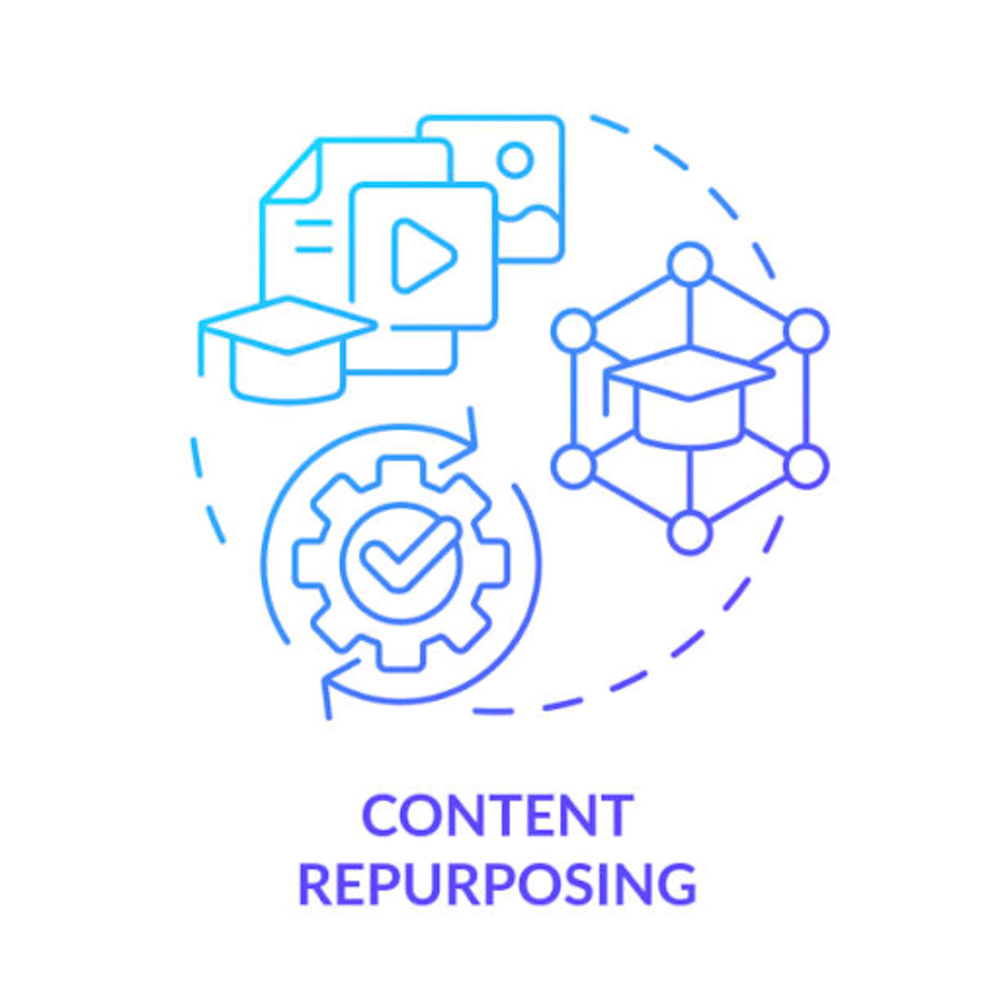
Maximizing ROI with content repurposing is a cost-effective and efficient strategy that allows you to get more value from your existing content assets. Instead of creating entirely new content from scratch, you can repurpose and recycle your existing material into various formats and distribute it across multiple channels.
Here are strategies to help you make the most of content repurposing for a higher return on investment (ROI):
Audit Existing Content: Begin by conducting a comprehensive audit of your existing content. Identify high-performing pieces that can be repurposed for different purposes.
Understand Your Target Audience: Tailor your repurposed content to match the preferences and needs of your target audience on each platform or channel. This ensures that the content remains relevant and engaging.
Choose the Right Content Formats: Decide on the content formats that align with your goals and the preferences of your audience. Common repurposing options include blog posts, videos, infographics, podcasts, and social media posts.
Refresh and Update: Before repurposing, update and refresh the content to ensure it’s accurate and current. This can include revising statistics, adding new information, and checking for broken links.
Create Evergreen Content: When initially creating content, aim for evergreen topics that remain relevant over time. Evergreen content is more suitable for repurposing and extending its lifespan.
Leverage Different Angles: Repurpose content from different angles or perspectives to target various aspects of the same topic. This can reach a broader audience.
Snippet for Social Media: Take key points, statistics, or quotes from longer content and repurpose them as social media posts, engaging your audience with bite-sized information.
Transcribe Videos and Podcasts: Transcribe your video and podcast content to create written articles or blog posts. This opens up opportunities for SEO and caters to different learning styles.
Combine and Bundle Content: Combine related content pieces into comprehensive guides, e-books, or whitepapers. This can be used as a lead magnet or for email marketing.
Repurpose Webinars and Live Streams: Turn live webinars or social media live streams into on-demand content by providing edited versions, transcripts, or highlight reels.
Create Infographics: Convert data-rich articles or reports into visually appealing infographics. Infographics are highly shareable and digestible.
Translate Content: Reach new audiences by translating content into different languages. This can expand your global reach and maximize ROI.
Turn Statistics into Visuals: If you have content with statistics or data, repurpose it into charts, graphs, and visuals to make the information more engaging.
Leverage Email Marketing: Use snippets or excerpts from blog posts, articles, or videos as email content to keep your subscribers informed and engaged.
Monitor and Analyze Performance: Track the performance of your repurposed content to understand what works best. Use analytics to make data-driven decisions and refine your strategy.
Consistency and Scheduling: Create a content repurposing schedule to ensure a steady flow of fresh content across various channels. Consistency is key to maintaining audience engagement.
Cross-Promotion: Promote your repurposed content on the original platform to reach both existing and new audiences.
By implementing these strategies and repurposing your content effectively, you can maximize the ROI of your content marketing efforts. Repurposing not only saves time and resources but also extends the lifespan and impact of your content, helping you reach a broader audience and achieve better results from your existing assets.
Content repurposing is a smart strategy for maximizing the return on investment (ROI) of your content marketing efforts. By taking existing content and adapting it into various formats and channels, you can extend the lifespan of your materials, engage a wider audience, and save time and resources. Repurposing allows you to get more value from your content assets and reach different segments of your target audience.

To excel in content repurposing, it’s crucial to conduct a thorough content audit, understand your audience’s preferences, and choose the right formats. Refreshing and updating content, creating evergreen pieces, and leveraging different angles are essential for maintaining relevance. Additionally, taking advantage of social media, transcriptions, infographics, translations, and email marketing can further enhance the impact of your repurposed content.
Consistency in scheduling and cross-promotion can ensure that your repurposed content reaches a broad and engaged audience. Regularly monitor and analyze the performance of your repurposed content to refine your strategy and make data-driven decisions.
Content repurposing is a cost-effective and efficient way to breathe new life into your existing content, providing more opportunities for audience engagement and ultimately improving the ROI of your content marketing efforts.



